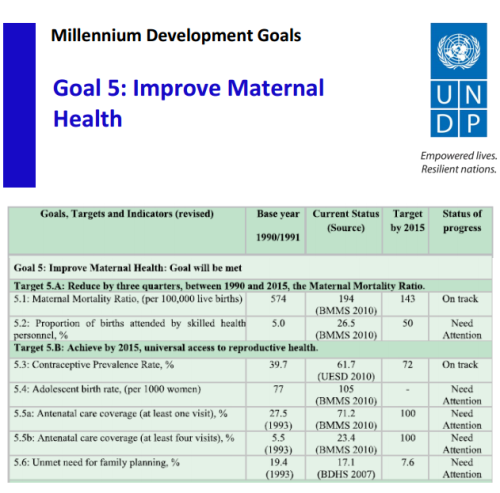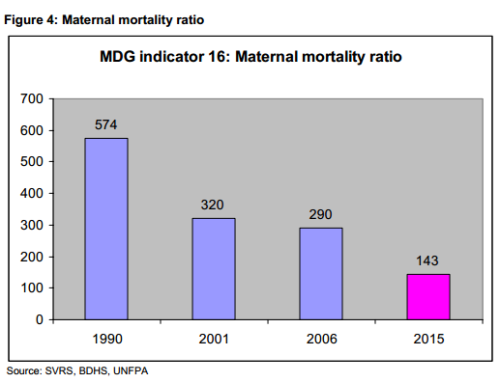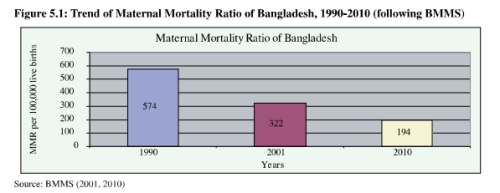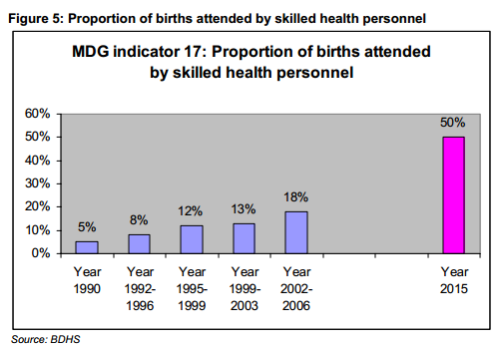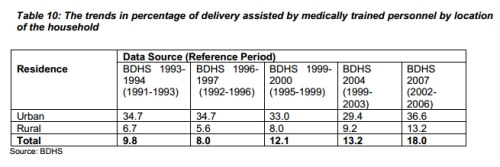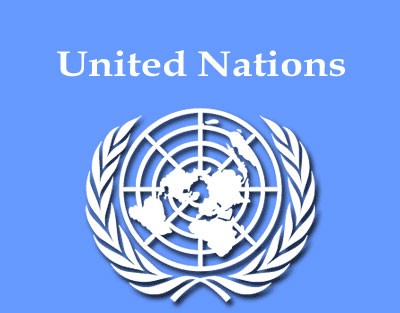BANGLADESH: Goal 5: A MAJOR TURNAROUND IN MATERNAL MORTALITY RATIO
The Bangladesh MDGs reflect a set of targets and actions contained in the Millennium Declaration that was adopted by 193 nations including Bangladesh, in 2002 based on the Millennium Declaration agreed in September 2000. Bangladesh has been observed and recorded to achieve impressive feats in pulling people out of poverty; ensuring that more and more children-both girls and boys, attend school, and have access to clean water. Bangladesh is among the 16 countries who have received UN recognition for being on track to achieve many of its MDGs, for instance, noteworthy progress has been made in the child survival rate. There have been some improvements to address the country’s massive environmental challenges over the past decade as well.
But we will look into the improvement made in the maternal mortality ratio of Bangladesh; which at 194 has shown a major turnaround. Performance on this goal is a major achievement as it was lagging behind in this sector. MDG 5 of Bangladesh is to improve maternal health; which has one target and two indicators, namely, maternal mortality ratio and births attended by skilled health personnel.
- Maternal Mortality Ratio:
Ever since the government of Bangladesh decided to emphasize the importance of the need to rapidly improve maternal health, it has been successful in progressing atleast some of the indicators. This was achieved by increasing the use of modern health care technologies/facilities among all segments of the population. According to goal 5 of MDGs, the maternal mortality ratio should be reduced by three-quarters between 1990 and 2015. Impressively, the Maternal Mortality Ratio in Bangladesh has reduced from 574 per 100,000 live births in 1991 to 320 per 100,000 live births in 2001 (Figure 4).
In 2006 the estimated maternal mortality ratio was 290 per 100,000 live births (as per UNFPA). However, this rate does not include the abortion related deaths. Yet the current trend/pattern in the maternal mortality ratio shows Bangladesh is on more or less on the right track of meeting its target, that is 143 per 1,00,000 live births, by the year 2015. The decrease in maternal mortality ratio between 1990 and 2006 might be due to increase in the rate of receiving antenatal care and tetanus toxoid vaccine by the pregnant mothers from 1990 to 2006, as it reduces the risks involved during pregnancies and at delivery-for both- the mother and child(Figure 4). The proportion of pregnant mothers who received at least one Antenatal care vaccine and who received it from doctors/nurses or medically trained people almost doubled; from 28% in 1989-92 to 49% in 2002-06. The mothers, who received two or more tetanus toxoid vaccines during pregnancy increased from 49% in 1990-93 to 64% in 2002-06.
Recently in 2010, according to the Bangladesh Maternity Mortality Survey 2010 (NIPORT, 2011), maternal mortality declined from 322 in 2001 to only 194 in 2010, which is a 40% decline in 9 years implying an average rate of decline of about 3.3 percent per year. The overall proportion of births attended by skilled health personnel has increased by more than fivefold in the last two decades, i.e. from 5% in 1991 to 26.5% in 2010.
- Births attended by skilled health personnel
Even at this age and day, 85 percent of deliveries take place at home in Bangladesh. The proportion of birth delivered at health facility increased from 4 percent in 1989-93 to 15 percent in 2002-2006. The institutional deliveries in Bangladesh increased significantly in the last three years compared to the progress in earlier years. However, there are high rural-urban variations and regional disparities in institutional deliveries. According to BDHS 2007, the number of birth deliveries at medical facilities was three times higher in the urban areas than that in rural areas of the country (Figure 5).
Also, the proportion of birth deliveries attended by medically trained and skilled health personnel was only 5 percent in 1990 and it increased to 18 percent in the period 2002-2006, at an annual average rate of 16.25 percent; which is considerably lower than the country’s MDG target, which should be 50 percent by 2015 (Figure 5). If this trend goes on like this rate, then the country will not be able to achieve its MDG target for improving maternal mortality ratio.
Moreover, Bangladesh needs to take measures to significantly increase Institutional deliveries in order to improve maternal health to a satisfactory level because these medically trained personnel, apart from qualified doctors also include trained nurses, midwife, paramedic, family welfare visitor (FWV); who are not trained well enough to prevent many of the obstetric complications. The statistics show that the proportion of delivery assisted by skilled health personnel is considerably higher in urban areas than that in rural areas. Thirty five percent of the deliveries were attended by medically trained providers in urban area and only 7 percent in rural area during 1991 to 1993. In the period of 2002-2006 the corresponding figures were 37 percent and 13 percent respectively. This trend illustrates that the rate of improvement in terms of increase in number of deliveries attended by skilled health personnel is higher in rural area compared to urban area (Table 10).
- Challenges:
Though Bangladesh has considerably succeeded in achieving most of the MDG targets, there is still room for improvement in some of the indicators in Goal 5 of the MDGs. These are:-
- More medical facilities and attention should be provided to pregnant women as a significant proportion of them are iodine deficient as well and develop night blindness during pregnancy. This needs to be taken into consideration and should b e prevented.
- Improvement in births attended by skilled health personnel is not satisfactory. Only on average 480 CSBA are produced annually by the Obstetrical and Gynecological Society of Bangladesh (OGSB) and a total of 3000 have been trained so far, which should have been nothing less than the target of 13,000 trainees. Rapid training of skilled health personnel, increase in infrastructure and cautious monitoring is needed, for Bangladesh to reach its set target by the year 2015.
- One important intervention of the Maternal Health Strategy 2001 was to train medical officers in obstetrics or anaesthesia (1 year diploma level) and place them in functional teams at District facilities. So far only 206 obstetrics and 118 officials in anaesthesia have been trained. Moreover, only 57 percent of the obstetrics and 69 percent of the medical officers in anaesthesia are appointed in designated positions with frequent failure to retain both the obstetric and the anaesthesia to perform caesarian sections in a facility due to variety of reasons (MTR 2008). The Government should take steps to overcome this problem, with special emphasis on reducing absenteeism in rural areas.
Actually, the problem lies at the grassroots level. In Bangladesh, majority of the population still has very little knowledge about the MDGs and its necessity in the country. Until and unless the concept is well understood by the mass people, the benefits of the MDGs may not be achieved to its full potential.
WEBLIOGRAPHY
http://www.undp.org.bd/projects/prodocs/PRS_MDG/Situation%20analysis_health.pdf
http://www.undp.org.bd/mdgs.php
–SAKSHI RAINA
TYBMM

